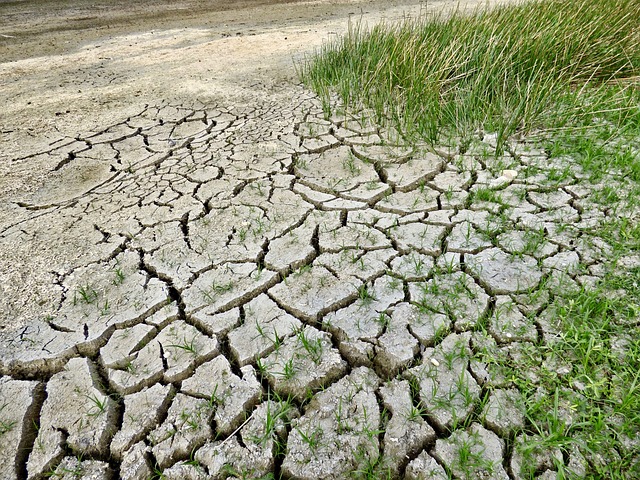Women engaged in agri-food systems in Africa and Asia, including in India, face the highest climate risks such as droughts, floods or shortened crop-growing season, a new hotspot map developed by an international team of researchers has identified. It ranked 87 countries based on the level of climate change threat faced by women working in agricultural sectors. The study covered nations in Latin America, Asia and Africa. India stood 12th on the risk index developed by researchers from six institutes. These included the Consultative Group on International Agricultural Research Gender Platform, International Livestock Research Institute, Kenya, International Rice Research Institute, Alliance of Biodiversity International and International Center for Tropical Agriculture, Ireland, International Rice Research Institute, India, International Food Policy Research Institute, United States, Accelerating Impacts of CGIAR Climate Research for Africa, Kenya and the World Bank Group, United States..
Threats posed by the climate crisis disproportionally affect certain communities and social groups that are more exposed. People living in low-and middle-income countries (LMIC) are at heightened risk. Within these countries, local climate hazards tend to negatively affect women more than men, the analysis showed. Moreover, women’s adaptive capacities tend to be more restrained than men’s because of underlying gender inequality and unequal access to resources, it added. The other Asian countries included Bangladesh, Pakistan, Afghanistan and Nepal, ranking second, fourth, seventh and eighth respectively.
Agri-food systems encompass production, post-harvest handling and distribution. Within African and Asian regions, central, east and southern Africa and west and south Asia were particularly at risk, the authors of the report noted. The research combined insights on climate, gender and agri-food systems to map these areas as ‘climate–agriculture–gender inequality hotspots’. “We show that significant climate hazards, high exposure faced by women in agri-food systems and high vulnerability faced by women due to systemic gender inequalities converge particularly in central, east and southern Africa, as well as in west and south Asia,” said the study’s first author Els Lecoutere, a researcher at the CGIAR GENDER Impact Platform in Kenya. The team involved in the study calculated each country’s risk based on these indicators and plotted the score for each LMIC country into a color-coded map.
Gender is an important determinant of the impact of hazards and the research illustrates this through examples of previous studies done in different countries.”… women and girls are found to be more likely than men to go hungry following natural disasters linked to climate change. In India, for example, twice the number of women than men reported eating less in response to a drought,” it said. In this context, the maps could be impactful in informing decision and policymaking around gender-responsive climate action and guide the allocation of scarce resources to populations at highest risk.
“Another key use for the results of our study is the upcoming COP28 and ongoing negotiations around a loss and damage fund and other climate investments. The hotspot maps can help decision makers and investors target finance and investments to the areas where women are hardest hit from climate change risks. The researchers, however, pointed to certain limitations of their study, for example a lack of data that has made it impossible to calculate a ‘hotness’ score for some countries, including small island development states.
“The climate-agriculture-gender inequality hotspot risk index captures the convergence of climate hazards, exposure, and vulnerability because of gender inequalities faced by women in agri-food systems,” said Lecoutere. The team of researchers involved in the study calculated each country’s risk based on these indicators. “We plotted the resulting ‘hotness’ score for each LMIC country into a color-coded map, which makes it possible to compare and contrast risks in different countries.”
The researchers also applied their methodology within four LMIC countries: Bangladesh, Pakistan, Zambia, and Mali. In the global ranking, they took places two, four, 13, and 18, respectively. Multiple drivers of risk contributed to these rankings.”For the two focus countries in Asia, high climate hazards and women farmers’ exposure drives climate risks, whereas in the two focus countries in Africa structural inequalities play a larger role,”.In Mali and Zambia, secondary resources confirm that women are restricted by norms that hinder their access to land ownership, information, and economic empowerment – limitations that negatively affect their ability to adapt to climate hazards. In Pakistan and Bangladesh, women contribute significantly to agricultural activities, but do so mostly informally. Their work often remains unrecognized, unpaid, or underpaid, which leaves them dependent on agriculture, and vulnerable to the adverse aftereffects of ever more frequent and severe climate hazards.
The researchers pointed to certain limitations of their study, for example a lack of data that has made it impossible to calculate a ‘hotness’ score for some countries, including small island development states. Yet, it is often these locations that are the most poverty- or conflict-stricken, and therefore vulnerable, making it plausible those women in these environments face significant climate risks. While the team pointed out that in some cases data might not be available or sufficiently recent to be effectively used for policy making, their findings offer insights for other localities. One possible starting point is reducing women’s sensitivity to harm from climate hazards by addressing systemic gender inequalities and supporting the adaptive capacities of all agri-food system actors in gender-responsive ways. “Another key use for the results of our study is the upcoming COP28 and ongoing negotiations around a loss and damage fund, and other climate investments. The hotspot maps can help decisionmakers and investors target finance and investments to the areas where women are hardest hit from climate change risks,” Lecoutere pointed out.
(Writer can be reached at:[email protected])
Climate Crisis & Agony of Women in Agriculture
519



